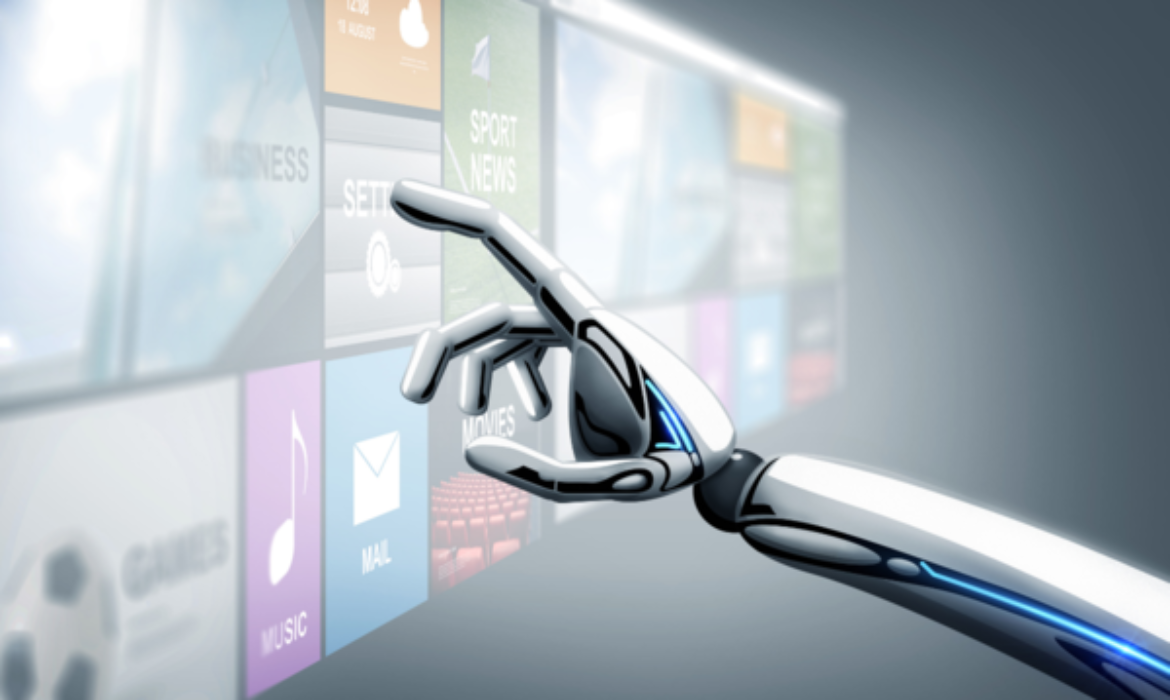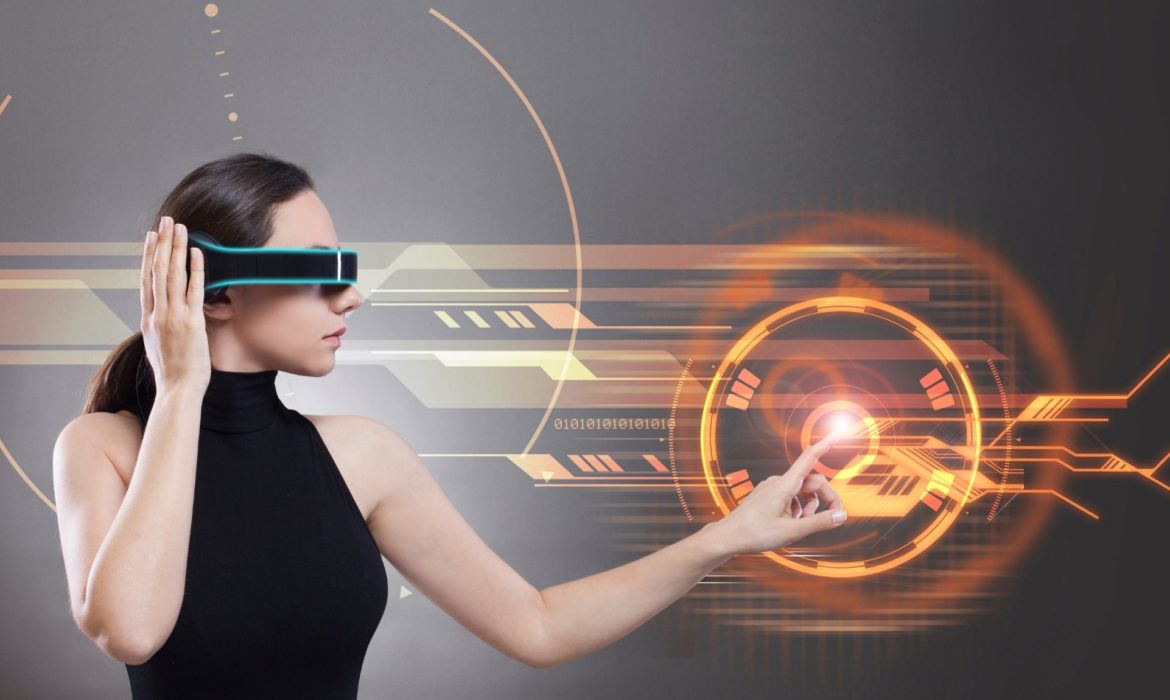7 AI Apps to Look Forward in 2021
Brands of almost every mega-industry are heading towards the unusual conditions to cater to success volumes. These brands gadget AI in apps for improving customer satisfaction levels, boost business profits or provide new-level comfort, etc.

Companies find themselves in a tug-of-war competition when they access the mobile app market. This indoor situation prompts them to consider all emerging digital trends to stay valued.
Due to the rising impact of artificial intelligence on the market worldwide, big groups like Alibaba, Amazon, eBay, or Tinder value AI in their apps to the full extent to drive customized mobile U/X and gain momentum for their businesses.
According to our company’s research, the global market of AI is forecast to touch US$252.01 billion in 2025 from US$29.82 billion in 2019, at a CAGR of 42.7%.
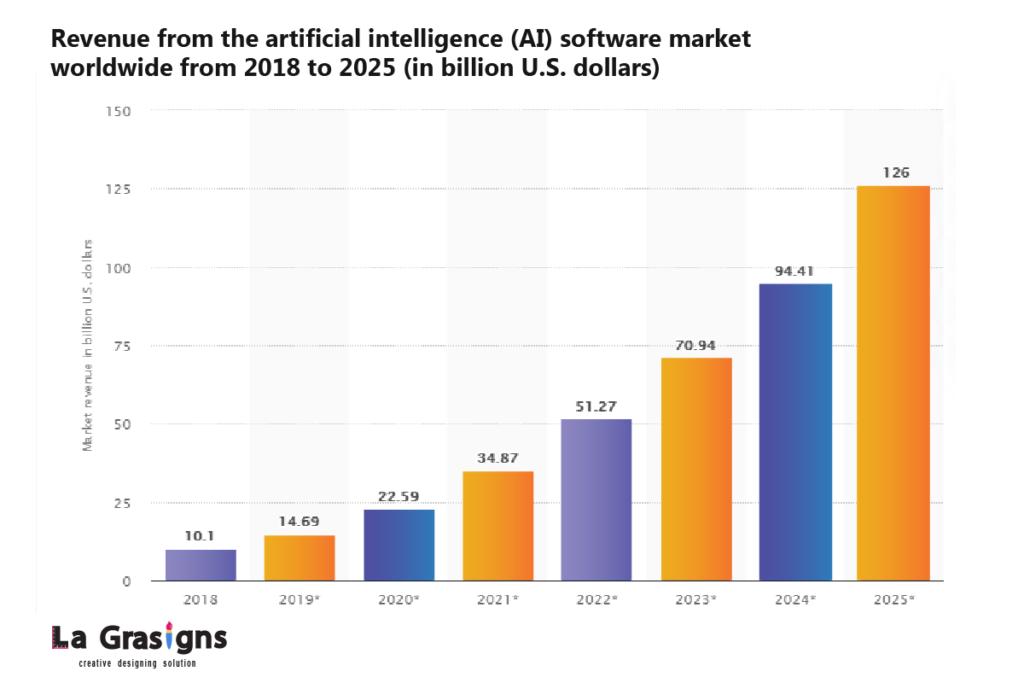
The recipe is simple, invest in AI and leapfrog your rivals, or find your business in chaos.
To help you explore what AI can feed your souls. This article shows 7 best AI-powered apps for Android and iOS platforms to recapture your delight for business, education, entertainment, assistance, health, or gaming.
BEST AI APPS FOR IOS AND ANDROID
The best-of-the-lot apps in App Store and GooglePlay show how various industries get privilege via AI implementations. The list adds the AI apps created by eminent trend-setting groups as well as have won vast popularity and keep holding strong feet in the market.
1. Retail App: E-Bay
The eBay system injects artificial intelligence to provide users a fitting shopping experience. The AI eases the process to understand the intent of the customers’ search and present a full bucket of relevant products. It helps in shortening the search time and leaves a festive impact on its consumers. E-Bay uses superintelligence- Machine vision to help find the desired product by the image added by the customers. Besides, ML lets traders discover and compare the trendy costs of items to help them sell products quicker.
Key AI applications: natural language processing, machine learning, computer vision, & translation.
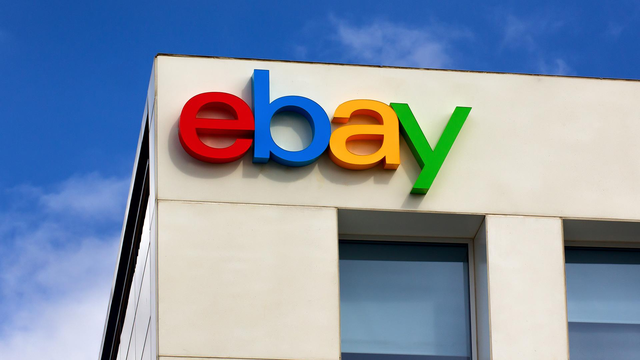
2. Media App: Pandora
Since Pandora’s music streaming service has been in the business field for 20 years, it has now earned 3rd place for radio streaming AI apps for iPhone recently. The fusion of musicology and data science facilitated the creation of the app that covers the listening tastes of users and provides them with the intended songs that exactly suit their minds at present. The “Music DNA” feature actually blends with the mood of a person; thus AI program breaks up every musical part into the smallest attributes to capture the spirit of the song.
Key AI applications: machine learning, voice and speech search, In-app Voice assistant.
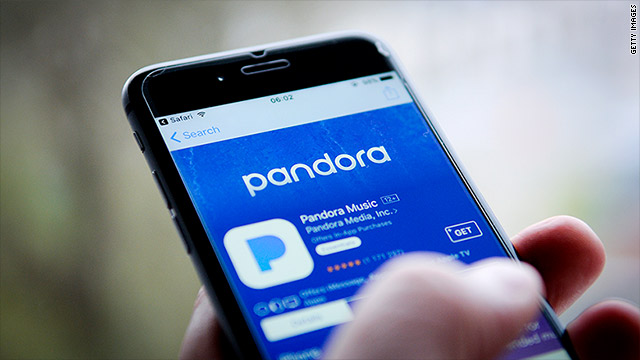
3. Health Care App: Elomia
The fear of self-isolation due to COVID-19 led to a fellow in the UK die by suicide, which urged the co-founders to launch the app Elomia. It is an AI-powered therapy chatbot, which works via Facebook Messenger, and acts as a protector of the public fighting anxiety and loneliness. It has been made by psychologists to understand the mental thoughts of one and construct a discussion that can provide pleasant comfort to users using Cognitive Behavioral Therapy (CBT). The app can also serve as a medium for people who can’t go to a therapist or have to self-isolate, turn the situation a bit more relaxed.
Key AI applications: chatbots, health assistant, virtual assistance

4. Travel App: Hopper
Predictive aptitudes of the Hopper traveling app serve millions of users with accurate insights of hotel room costs, flights, and car hire up to 1 year in advance. As a customer reaches the desired location, the app delivers information on fares, suitable travel dates and can predict the upcoming shifts in prices for the trip in the future. The app also facilitates the users with smart notifications based on their previous search on varying prices for the viewed offers. These features made Hopper app vital for all travelers in finding cheap trips and live the in-time experience.
Key AI applications: machine learning.

5. Voice Assistant App: Amazon Alexa
A leading virtual assistant mobile app by Microsoft paid heed to the user’s infotainment, planning, making to-do lists, music playback & much more. With voice interaction, the app leads to manage other Alexa-driven devices such as wearables, smart home utilities, tablets, TVs, etc., via smartphones. Customers around the globe find their trust in Amazon Alexa’s personal assistant for routine tasks. Thus it makes the Amazon company a star performer in AI-driven apps.
Key AI applications: voice recognition, streaming podcasts, real-time information, etc.
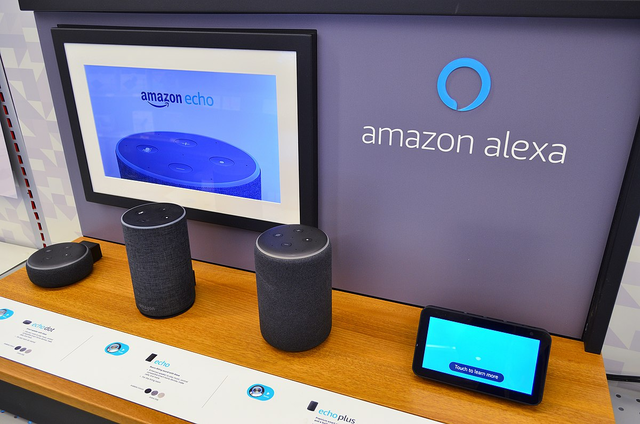
6. Education App: ELSA Speak
ELSA Speak is a hot AI-powered app of how to learn or speak English. ELSA app serves as a digital English tutor, learns from speech data that enables users to speak English without much of a force using this application. It uses voice recognition technology with Machine Learning to hear to learners’ accents and analyze the quality of declared words with red, green, and yellow colors. Its impressive feature lets users interact with the basic American literary pronunciation in English. ELSA Speak has been downloaded over 4.4m times and claims to hold more than 3.6m users in 100+ countries.
Key AI applications: machine learning & speech recognition.

7. Gaming App: Minecraft
Minecraft- Game of the Year in 2012, is a sandbox game originally planned by developer Markus Persson and later treated by Mojang. Push off a conventional video game, Minecraft has no definite goals to win in the game. It let the players arrange 3D (blocks) to create a game world, turning it into an eternal videogame. That’s All. The game does offer many different modes like spectator mode, adventure mode, and so on.
The AI feature makes Minecraft more amazing to explore. It adapts to the gamers’ customization and allows the power of fabricating virtual environments. Although there are games like Minecraft, not a single one has an edge nearer to its creativity and the scope it gives to the gamers.
Key AI applications: Deep learning, artificial neural networks.

FREQUENTLY ASKED QUESTIONS
What is an AI app?
An AI app is energy that integrates machine intelligence into its functions and services. Any app can shift into an AI application provided the call is there. AI has served groups such as Netflix & Amazon to boost their customer experience and inspire many people to have a delight of them.
What are the top AI apps?
At the moment, chatbots are one of the leading fields of AI development. Apps such as Apple’s Siri, Microsoft’s Cortana, Amazon’s Alexa are the top in this domain. For the 7 best AI apps, read LaGrasigns. blog section for more details.
What could be the cost of an AI app to build?
The cost of building an AI app relies on the stature and complexity of the intelligence required. Since it requires developers who are able to build advanced algorithms, any group developing an AI app will need to pay more to hire the skilled developers. Generally, AI integration will increase the cost of an app by between 25% to 45%.
Emerging Technologies to Look Forward in 2021
What Is Emerging Technology?
Emerging technology is generally used to represent new or rising technologies, but it may also refer to existing technology’s development. It can have a slightly altered meaning when used in other fields, such as media, marketing, business, science, or learning.
The term also commonly refers to technologies that tend to be modified or expected to be available within the next generation or are usually reserved for building, or are expected to build strong social or economic effects.
Which technologies will be driving the world’s tech industry in 2021? You’ll find out soon in this article. It has to be an exciting and prudent start to the year. The emerging Technology Community laid their eyes on new technologies with its top annual listings. The 2021 ranking varies a bit from the 2020 list.
By 2021, the leading most emerging tech, according to the CompTIA Emerging Technology Community, are AI (artificial intelligence), Cloud Native Tech, IoT (Internet of Things), AR (augmented reality)/VR (virtual reality), Blockchain & Cryptocurrencies.
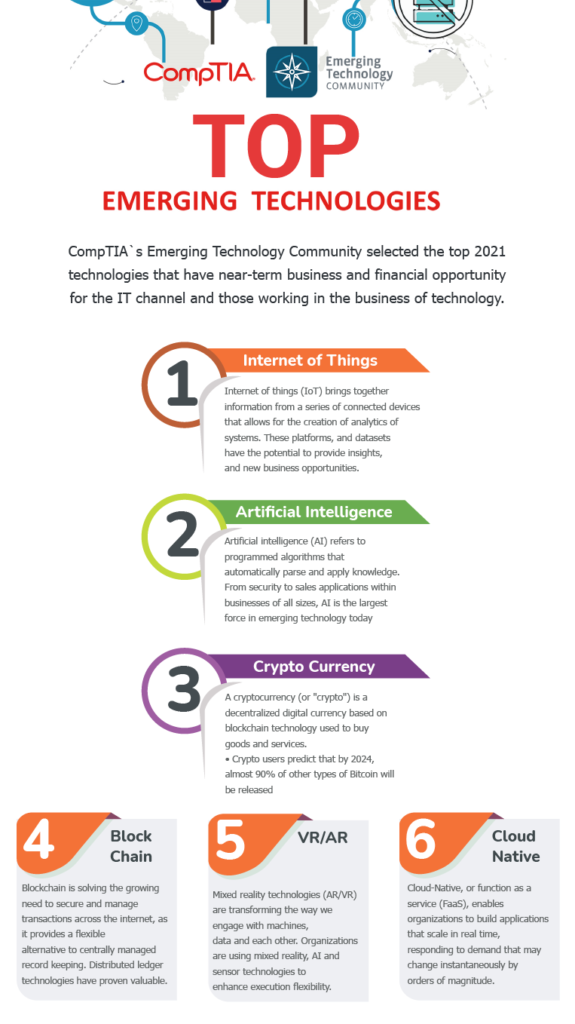
1) Use of Ethical AI
In previous times, industries consuming AI or machine learning advancements paid little heed to their ethical impact. But in recent times, values-based customers and employees anticipate that organizations should embrace AI in a logical shape.
If we set our eyes on the traditional AI in the world, we would be familiar with the virtual assistants’ power technologies such as Apple’s Siri or Amazon’s Alexa, which precedes natural language processing (NLP) technology.
Automated facial recognition or big data analytics is another perfect example of AI, used for sharp business insights and decision-making.
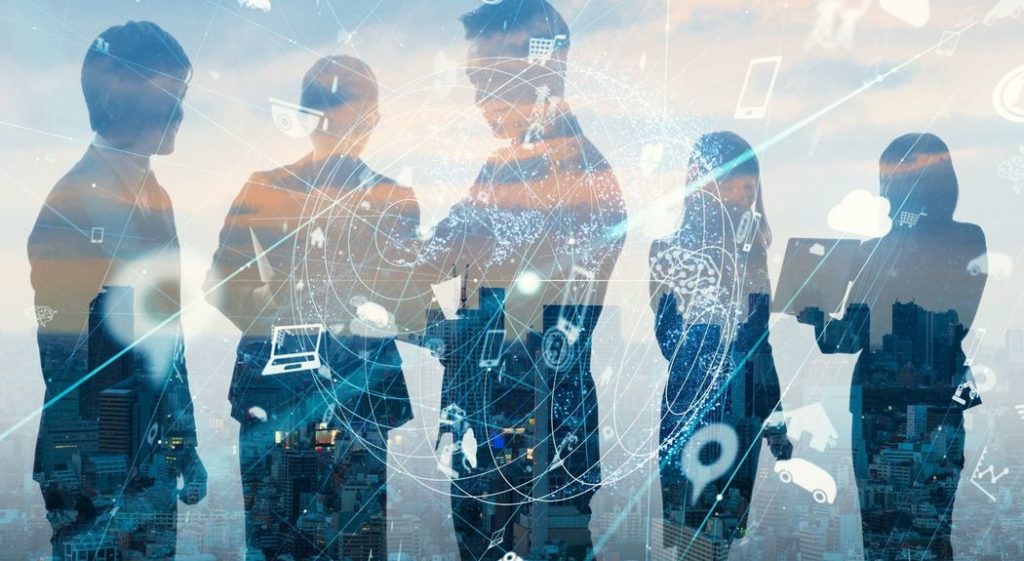
AI Components- Machine Learning
Machine learning is the chronic form of artificial intelligence in development for business purposes now. ML are algorithms that appear to “learn” eventually, getting better always by practicing more often. One of the key examples is #Learning associations.
It is the method of acquiring insights between the products. Consider how independent products can be associated with one another. One core application of machine learning is studying the connections between the products that people purchase.

Deep Learning is an even more explicit version of machine learning and is responsible for performing more advanced functions, like fraud detection. These algorithms help self-driving cars contextualize information fetched by their sensors, like the object’s distance, travel speed, and a prediction to reach in the next 5-10 seconds. Deep learning must have a promising slam in businesses worldwide and is likely to perform tasks more often.
AI & Modern Businesses
In the business of today’s times, artificial intelligence holds a prominent place. Indeed, most of us interact with artificial intelligence in some form or another on a daily basis.
From the tedious to the exciting, artificial intelligence is already disrupting virtually every industry’s trading process. As artificial intelligence technologies increase, they are growing imperative for businesses that want to display a dominating move.

AI’s Diverse Impact:
This trait showcase artificial intelligence invaluable throughout many industries, whether it’s simply serving visitors or completing a complex task like monitoring a wind turbine and predict its early improvement.
AI’s versatility can also be observed within the financial sector. The Massachusetts Institute of Technology collaborated with TD Bank to integrate machine intelligence during regular banking operations, like mortgage loans. “Through this technology, you will get a personalized message from the bank for renewal while you are at the closest to the branch.
In the future years, businesses will deliberately decide to go with the allies that hold data ethics and implement data administration that mirror their own and customers’ values.
2) Cloud-Native Tech
For quite a while now, cloud-native has become one of the spicy topics for business management. Some developers call it a ‘hype’ that will lose friction in the coming times. For others, it may be the future of software development.
Cloud-native is all about reconceiving the entire business systems. The cloud-native systems are meant to adopt rapid change, large scale, and resilience.
Compatible Definition
“Cloud-native technologies empower organizations to create and run upgradable apps in modern, dynamic conditions such as public, private, and hybrid clouds. Containers, microservice, service network, stable infrastructure, and standard APIs can explain this approach”.
Cloud-native tech holds speed and agility. The world’s business systems evolve from enabling skills to strategic conversion weapons that boost business velocity and growth.

The Success Story of Alibaba’s Cloud-Native Technology
Since 2011, Alibaba had been supporting containers through a cloud-native technology system. Being a pioneer in this industry, Alibaba has now developed a containerized infrastructure architecture among leading technology companies. This architecture is now the technological spine of the entire Alibaba Group.
Alibaba support containers to develop cheap virtualization and planning technologies. They are able to provide flexible deployment units and shift the resource planning mode from static to dynamic and as required.
The tech giant has also adopted Kubernetes as its container arrangement program to enhance automation and ease the application deployment. By then, Alibaba has been on the way to improve the production and accessibility of Kubernetes. The platform also enables Alibaba to refine its R&D and deployment methods.
To thrive resource and efficiency, Alibaba’s entire infrastructure has become more clear and connected to many open-source ecosystems. Alibaba also integrates and gives beneficial concepts, technologies, and ideas with open-source groups. Now, Alibaba Cloud runs China’s biggest cloud-native application – the 11.11 global shopping festival.
3) Internet of Things (IoT)
The Internet of Things (IoT) is connected with the use of well-combined devices and systems to support data, grouped by sensors and actuators in machines or other physical objects.
LaGrasigns Vision of IoT Services
In the wider sense, IoT surrounds everything connected to the internet, but it is frequently defining objects that “talk” to each other. “Simply, the Internet of Things is made of devices such as easy sensors to smartphones and wearables – connected all together,”

The next future rule is going to be, “Each device that can be connected will be connected.” But why would you eager to have connected devices talk to each other? Let’s think you are on your way to a conference; your car could possess navigation and already know the best route to get.
Imagine heavy traffic; your car might send a message and notify the other party that you will be late. What if the wearable device at your workplace could analyze your activity and productivity and share that data with other devices you used while working?
IoT can be applied to an extent like transportation networks- “smart cities projects,” which can improve environmental inefficiency. The smart use of energy resources through IoT also helps upgrade the living standards of our everyday life.
What Next for IoT?
The IoT will hugely strike the economy by transforming many companies into digital businesses, suggesting new business models, improving ability, and boosting employee and client engagement.
This particular tech is anticipated to travel with extreme speed in the next years. This convergence will unleash new areas of services that will unlock futuristic opportunities for individuals and businesses.
4) Augmented & Virtual Reality
2019 should be counted as a successful year for virtual and augmented reality (VR/AR)– mutually known as Extended Reality (XR).
Virtual reality – where users wear a headset and are fully occupied in cyber environments – has been developed to push design, marketing, education, and retail needs.
Augmented reality – where computer images are projected onto the user’s view of the physical world through a screen or headset – is a more complex action. It expects the software to “view” what is afore.
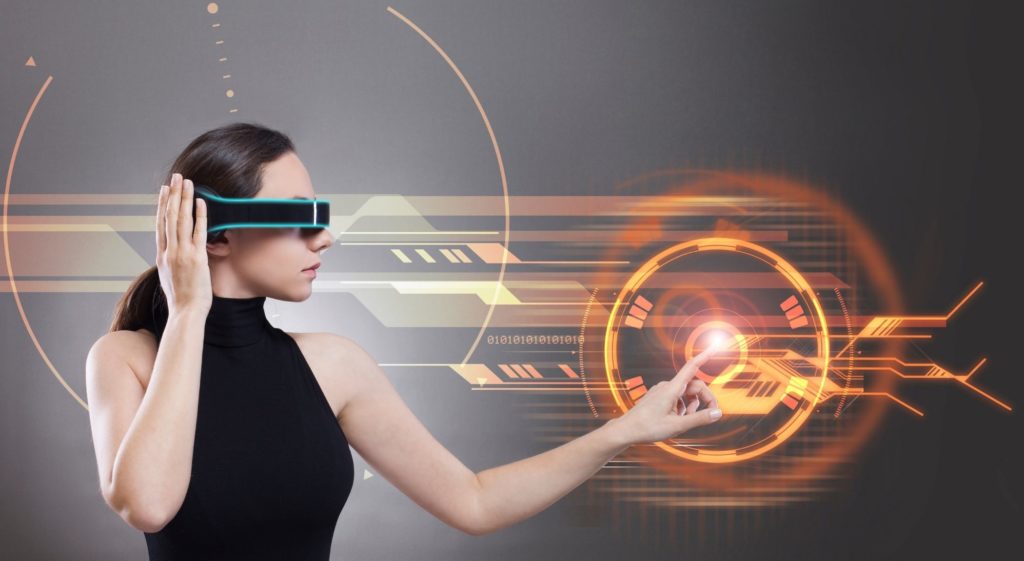
It is a burgeoning trend, especially suited to mobile computing and business applications among companies. It’s finding its way to get even bigger as AR-built smartphones and other gadgets become handier worldwide.
AR is readily open and used in many ways, like Snapchat lenses, in apps that help you locate cars in a crowded parking lot, or in many e-commerce apps that let you shop for clothes without even leaving home.
How Is XR Affecting the Future Strategies of Brands?
Retailers and innovative brands are looking to adopt immersive digital methods due to the increasing super intelligence impact in offline shopping.
To boost revenue, drive consumer action, and enhance brand awareness and loyalty, AR plays an influential role.
How do they do it? Augmented reality (AR) is a key shift enabler for offline user engagement that brands and retailers apply to digitalize the consumer experience. This digital revolution is already changing trends for retail businesses.
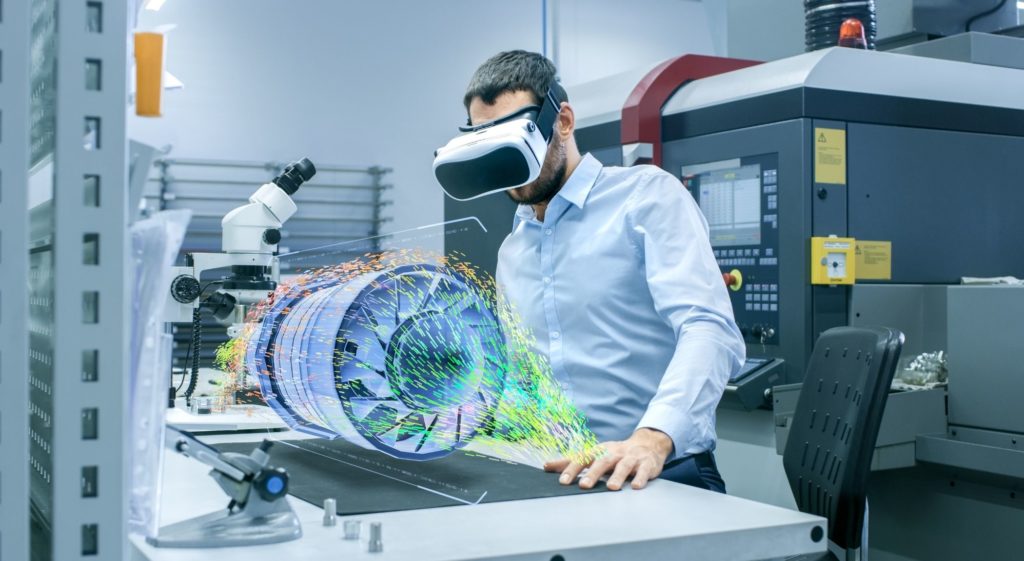
XR’s User Experience
Although AR is still a newbie in terms of adoption, it’s already becoming an integral part of the shopping adventure. Multiple brands, such as Gucci, Lacoste, Tesco, Toyota, and IKEA, utilize AR to embed lively interactive content into their products and engage consumers in a physically virtual world.
What if you could see your medication packing at home and place an online order directly from the box without reaching the pharmacy or online portal?
Creating AR content can uplift brands and retailers’ businesses from scratch and understand consumer behaviors. Brands that have learned and integrated AR technology into their companies see doubled revenues, spontaneous brand awareness, and a leap in customer loyalty.
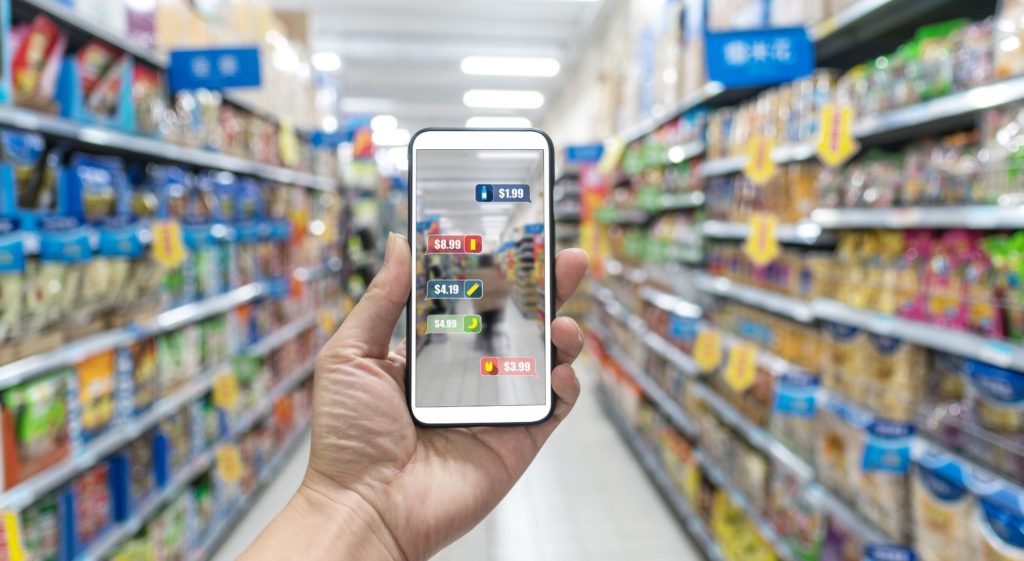
XR- The Next Big Thing
As we showed earlier, there are many AR/VR devices globally, including smartphones, headsets, wearables, tablets, and consoles. Each AR/VR gear provides an exciting user experience across the reality spectrum but with definite limitations.
Take a deep breath and think, what is the future of our devices? How are they beginning to evolve with XR? What if we could have see-through screens we are beset by every day?
Pokémon Go provided the public with a taste of mobile AR. But that was just the glance of what is possible. The XR devices of the future will provide customized, accessible, and well-designed experiences. As these factors take hold, a platform shift is expected.

From the compact view, we may be using augmented reality tech to look over text messages and smart-glasses to scroll through Facebook.
5) Blockchain Technology
Blockchain is a mechanism for forming a shared ledger OR an immutable ledger that helps record transactions and track assets in a business system. An asset can be physical (a house, car, land) or virtual (intellectual property, patents, trademarks, branding).
Blockchain Beyond the Crypto Circle
The term “ledger” appears straight from the cryptocurrency world, containing a record of financial transactions. More commonly, this ledger can be a store of series of data.
Once we move beyond the digital currency’s record of transactions, new industries reveal. Consider, real estate businesses, smart contracts, and content delivery are all potential evidence for the Blockchain technology.

Blockchain is ideal for delivering the information because it affords quick, shared, and utterly transparent data saved on an immutable ledger that can be accessed only by authorized network members.
The network allows you to track orders, cash, accounts, stock, and much more. And because members share a single view of the record, all transaction details are fully reachable, provides huge confidence, as well as new powers and opportunities.
The Future of Blockchain
Blockchain is an emerging technology, so finger crossed predictions are there at its potential. In a Tech Republic Research study, 70% of professionals who responded are non-techy of Blockchain. 64% insisted that Blockchain affect the world industries somehow in the coming times and predict a positive impact.
The latest Trend Insight Report from Gartner made the following prediction:
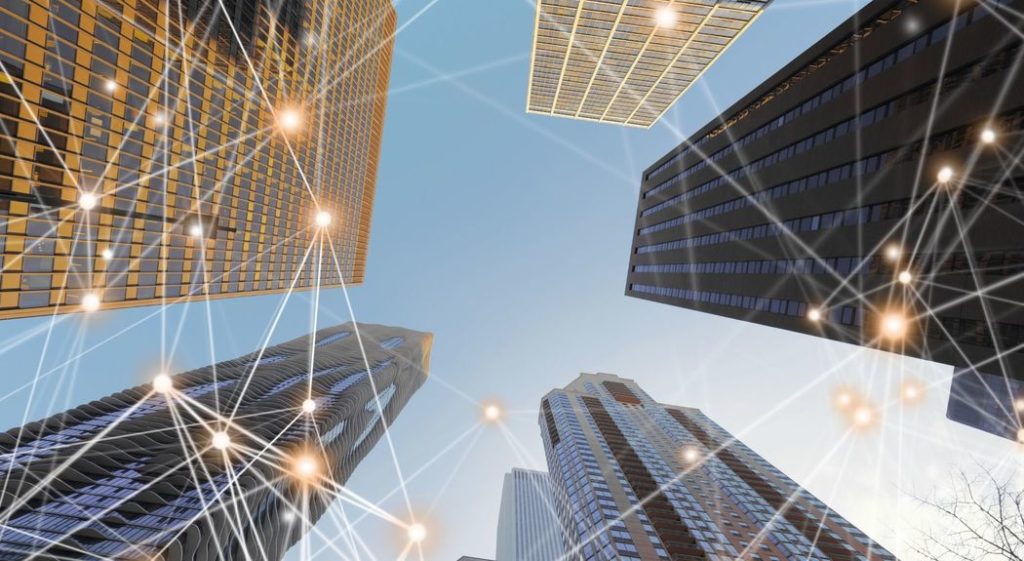
- By 2022, just 10% of businesses will achieve drastic transformation through Blockchain
- Also, by 2022, at least one innovative company stood on Blockchain tech will be worth $10 billion
- By 2026, the industry value added by Blockchain will reach just over $360 billion, and by 2030, it can win more than $3.1 trillion
- Cybersecurity is among the most promising areas of predicted growth for Blockchain technology.
Data tampering is an exclusive challenge for every diversified business in the world. Through Blockchain tech, industries can prevent tampering, secure data, and enable members to verify a file’s authenticity.
6) Cryptocurrency
A cryptocurrency (or “crypto”) is a decentralized digital currency based on blockchain technology used to buy goods and services. It holds an online ledger with strong cryptography to guard online transactions.

These crypto’s work through a technology called a blockchain. You may be familiar with the most demanded versions, Bitcoin and Ethereum, but there are more than 5,000 types of cryptocurrencies in the market, according to CoinLore.
Cryptocurrency- Area of Performance
A cryptocurrency is a symbol of exchange that is digital, coded, and decentralized. Unlike the U.S. Dollar or the Euro, cryptocurrency doesn’t hold any central authority to maintain its value. Instead, these tasks are usually distributed among currency users by the internet.
Bitcoin was the beginning of a cryptosystem, first outlined in principle by the inventor Satoshi Nakamoto in a 2008 article named “Bitcoin: A Peer-to-Peer Electronic Cash System.” Nakamoto briefed the project as “an electronic money system based on cryptographic proof instead of loyalty.” The cryptographic proof is a verified and marked transaction or a program called a blockchain.
Prediction About It’s Future

Cryptocurrency has been a global phenomenon since it launched in 2009, but there is still much space to learn about this developing technology. Many chit chats or concerns are swirling around and its potential to disrupt conventional financial systems.
This past year has already been a turbulent one for economic systems, but against a pandemic backdrop, the digital currency sectors continued to evolve, prevail, and grow.
Whether in the form of extended regulatory attention, broader interest in bitcoin and other cryptocurrencies as an exchanging medium, or blockchain tech’s general use in contrasting organizations, the aim is void and clear.
Shady Existence in the Current System
Cryptocurrency is tricky to regulate money within mainstream industries. Besides, a general consumer also has nothing to do with digital money.
However, to become relevant against a normal currency, it surely needs an increase in control and consumer protection, which surge the Bitcoins transaction costs and reduce the secrecy, the two most appealing factors.
The cryptocurrency also doesn’t leverage enough applications for the corporate world. Decentralization raises the chance of bankruptcy, and so does the unpredictability in its value.
The Promising Upcomings
As cryptocurrencies have been highly volatile and component over the years, especially Bitcoin. However, these are impressive forecasts about cryptocurrencies coming times:
- Crypto users predict that by 2024, almost 90% of other types of Bitcoin will be released.
- Jeremy Liew, Snapchat’s first investor, proclaims that Bitcoin will hit a tremendous $500,000 by 2030.
- The demand for cryptocurrency is expected to grow, as it is decentralized and safe.
- The tech-savvy individuals and companies are favoring encrypted currencies indicate the promising future.

But let’s not forget that it is still in its early stages. Hence, it is clumsy to find if a cryptocurrency will be the fate of money or run-of-the-mill in the future.
Final Verdict
What do you think is the ultimate challenge for our planet against superintelligence or advance technologies? Will humans remain superior, or machines nexus take the upper hand?
It is inevitably proved that these technologies are providing comfort to us. Hence, the limitations of men got extensions in terms of various tasks like manufacturing, production, fraud detection, data storage, and boosting business gains.
These existing technologies are undoubtedly very useful for mankind, but high-end up-grading will indeed cross our concerns and be safely negotiated in the future.
Check out our blogging section for more enthralling topics & about the latest tech with comprehensive research and analysis.

